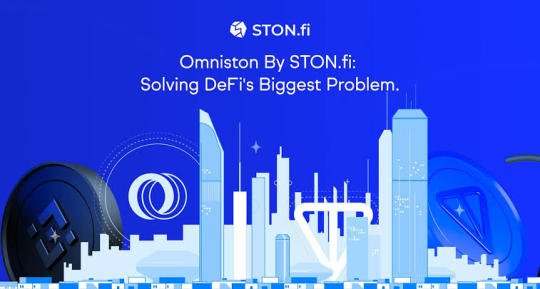#Access Control System Vendors
Explore tagged Tumblr posts
Text
https://www.cybergroup.in/access-control-system/
Advanced Access Control Solutions for Secure Premises – Cybergroup
Cybergroup offers cutting-edge Access Control Solutions to enhance security and streamline entry management. From biometric systems to RFID and smart card readers, our tailored solutions ensure only authorized access to your facility.
#Access Control Solutions#Access Control System Provider#Access Control System Vendors#Access Control System Manufacturers
0 notes
Text
Swing Gate Turnstile is typically called a slap door in the rail transit market. Its barrier body (gate pendulum) remains in the type of an aircraft with a certain area, perpendicular to the ground, and swings through rotation Implement blocking and release. The products of the blocking body are frequently stainless steel, organic glass, and tempered glass. Some also utilize metal plates covered with special versatile products (to reduce the damage brought on by hitting pedestrians). Bridge Smart Swing Barrier Turnstile The more popular name has been inherited from the initial bridge-shaped structure. It includes a main chassis and 2 movable swing bars. The swing bars can swing 180 ° or 90 ° to accomplish the function of discouraging or releasing. Column Swing Turnstile The look of the primary devices is in the form of a column, which can carry out the very same functions as the bridge type Swing Barrier Turnstile. It is characterized by lower expense and less space. RS Security Co., Ltd Main Products: door, flap gate, full height gate, swing gate, hydraulic bollard, road blocker, access control, face acknowledgment, barrier gate and so on. Application of Swing Turnstile It is generally used for passage entryway and exit management. Normally, just people are allowed to go through, or people dragging baggage, and disabled individuals. Considering that Swing Barrier Gate can attain broader channel attributes than wing gates. The majority of Swing Door Gate passages can be blended with pedestrians, bicycles, mopeds, handicapped automobiles and other non-motorized cars. part Swing Door Gate structural composition: Swing Gate Turnstile includes chassis, motion, swing arm, control system, infrared sensing unit, It consists of control devices and other parts. High-end brake Swing Door Turnstile consists of: chassis, brake movement, control system, infrared sensor, control equipment and other parts (high-end brake Swing Turnstile is that it can stop quickly and smoothly, there is no shaking, no mechanical stuck structure, and the swing arm immediately opens after power failure. It totally complies with fire defense requirements).
#swing turnstiles doors#automatic systems turnstiles#tripod access control#wing gates#sliding gate turnstile#turnstile building#turnstile vendors
0 notes
Text

RS Security Co., Ltd is a state-of-the-art business with intelligent gate equipment and high-quality services as its core. The business's primary service is: building website gain access to control, face acknowledgment Turnstile, Complete height turnstile, acrylic swing turnstile, movable gates, tripod turnstile, basketball court paid turnstile, parking area barrier gate, fully automatic hydraulic bollard, and so on, with car park management Depending on the research and development, production, sales and service of equipment, pedestrian gate management devices, smart door openers and other items, we offer customers with thorough management options. For many years, the business has actually focused on security tripod turnstile barrier, swing barrier door, city flap turnstiles door, speedlane gates, turnstiles, barrier-free systems, full high barrier door, access control, and parking area systems, and has actually gradually enhanced the products of magnetic cards, IC/ID cards, barcodes, and infrared series products. Integrated application, through continuous struggle and efforts, it has now turned into the most effective supplier of intelligent channel gate items in the market.
#waist high tripod turnstiles#sliding barrier#full height turnstile specifications#football stadium turnstiles#turnstile access control security systems#turnstile vendors#turnstile gate system
0 notes
Text












Loads o' Laundry 2.0
2 years after the release of Loads o' Laundry, we now present: Loads o' Laundry 2.0: a much-improved version of the Laundry mod and system!
Several gameplay features have been improved and many annoyances bigger and smaller have been resolved! A large number of new objects have also been added for your enjoyment. Sims 3 and 4 players may see some familiar things... Overall, it represents a marked improvement over the original version.
Furthermore, the Laundry Mod now comes with full language support for Dutch, French and European Portuguese with more coming soon... Edit: Polish has been added!
Before proceeding further, make sure you have the following requirements installed:
Requirements
Easy Lot Check
Easy Inventory Check
Smarter EP Check
Money Globals
Time-out Controller
Fetch Water (water bucket)
Suds 'n Bubbles (for making your own detergent)
Flowing Fabrics (for the fresh outfit)
Various master meshes (see Manual)
A more detailed list of requirements as well as detailed instructions can be found in the Manual.
Gameplay overview and Download links below the cut
Gameplay Overview
Your Sims will now generate laundry if their hygiene is low enough. This requires the Laundry Global Mod (offered separately from the objects) as well as a Laundry-related object being present on the lot.
Sims may store their laundry in a hamper. Sometimes automatically if it's close enough and your Sim is inclined to be neat....
Wash and dry your clothes: a variety of both historic and modern, manual and mechanical ways to wash and dry your laundry are included.
Tired of the laundry piling up? Simply place a "Laundry-Begone-Box" on your lot and your Sims will no longer generate laundry!
Laundry Global Mod
The global mod is the backbone of the laundry system. You will need it in order to have your sims produce laundry. As it is a Global Mod, it is in its own rar. The Laundry Mod also has various trait-related features for you to enjoy:
Support for the Nevernude, Neat and Slob trait
Support for the following custom lifestates: Ghost, Mermaid & SkeleBro
NEW: Support for @anachronisims' Nudist trait
NEW: Hamper magic! If your sims are neat enough, they may automatically put their dirty laundry in the hamper (if there's one in the room)
MAC-compatible!
You need to have the file "SunMoon-Laundry_Hamper_Wicker_Round-REQUIRED" in your folder in order for the global mod to work!
Washers, Dryers, Tubs and Lines
Your Sims may wash their laundry using a wide variety of both manual tubs and modern washers. Both of these require detergent to use. Of course, after your laundry has been washed, you can dry them using either a dryer or a line. Just make sure not to hang your laundry outside on a rainy day. Just a small overview of the features offered:
Laundromat mode: run your own laundromat business at home or on a community lot! Sims will actually wash their dirty laundry! Of course, it works for visiting Sims too!
NEW: @anachronisims Big Spender Trait now effects the likelihood of a Sim using a laundromat machine
NEW: Stock your washer or tub with a detergent of your choice; no longer will you need an entire box of detergent for a small load, now one detergent will last multiple loads!
NEW: 2 extra detergents have been added. You can now choose between a Box or Bottle of detergent, Soap Solution or even a Baggy of Soap Nuts!
NEW: The fabulous @jellymeduza has created a fantastic little ceiling rack for drying your laundry
NEW: Many more washers and dryers straight from the Sims 3 and 4
NEW: Modern laundry detergent vendor. You can still access any laundry product still despite its looks.
Custom sounds and animations: not only does laundry come with custom (Sims 4) animations courtesy of @mortia, there are also some custom sounds!
Color Controller
This set also comes with a "Color Controller". This object allows you to choose the look of not only your newly-spawned laundry, but also how the fabric on your drying lines looks like! Use only ONE per lot.
Bonus
Another new feature is the (optional) support for @lazyduchess Laundry token: players with FT installed, have the option of downloading his laundry mod and getting the same slower motive decay for comfort when changing into different clothes using our fresh outfit object. Players without FT and/or this token will get a small bonus to the comfort motive instead. This is NOT available for MAC-users! You will need the following files from his mod should you want this feature:
ld_BecksLaundryMotiveDecayController
ld_BecksLaundryMotiveDecayToken
Download links
Now for what you have all been waiting for: the download links. REMOVE all old files before updating! File names have been changed!
Download Laundry Global Mod (Required) Download Loads o' Laundry (objects) View Manual
Localization
Added support for Dutch
Added support for European Portuguese - Obrigada @logansimmingwolverine!
Added support for French - Merci @helene2troie !
Partial language support for many other languages has been added in the form of catalog descriptions for Sims 3 and 4 conversions. (NOTE: 3t2 conversions have no Simplified Chinese, 4t2 conversions have no Hungarian. None of them have Thai)
Polish, Russian and Brazilian Portuguese support is currently in progress and should hopefully become available sometime in early 2024
Would you like to have this set fully translated into YOUR language? Don't hesistate to make a translation using the localization strings. Just send it over when you're done and we will add it to the set! (send it via or Discord or PM fireflowersims)
Special credits and thanks: @gayars, @2fingerswhiskey, @picknmixsims, @lazyduchess, @jellymeduza, @logansimmingwolverine, Gaby, @hodgekiss, @mustluvcatz-reloaded, CashCraft, ATS/Sandy, EAxis, all the people who helped to localize The Sims 3 and 4, all our many wonderful Beta testers
565 notes
·
View notes
Text
About Drow Economy
From Drow of the Underdark (3.5e):
The drow economy consists of three separate yet inextricably intertwined systems of exchange, each of which is largely specific to a particular social and political caste.
Coins
When dealing with drow of a lower station, such as when a matriarch or priestess purchases goods from a vendor, the race makes use of coinage - just as do most surface dwellers. Gold, silver, and other precious metals have roughly the same buying power in drow communities as they do elsewhere, though the rate of exchange varies somewhat based on available metals, scarcity of resources, and the mood of the drow doing the shopping.
The drow rarely mint their own coins, preferring to make use of foreign monies brought in by outside traders or taken in raids on other races. On those rare occasions when they do mint coins, the results are exceptionally plain, either totally unadorned or stamped with the signs of Lolth and/or the house who produced them. The drow also use coins when trading with others, unless the foreigner has something of particular interest to sell.
Barter
Although one low-ranking drow might use coins to purchase goods or services from another low-ranking drow, the standard form of exchange between relative equals is a system of barter. A swordsmith might offer the neighboring baker a new blade in exchange for a few weeks’ worth of bread. A cleric might heal a wounded soldier, if the soldier in turn agrees to kill someone to whom the cleric owes a debt. A priestess might perform a marriage ceremony in exchange for several barrels of fine lichen wine and a potion of invisibility. At the upper levels of society, drow might trade slaves, individually or by the dozens, in exchange for exotic animals, valuable works of art, or access to a fertile mushroom farm.
Favors
The third practice, common only among the drow elite, is the exchange of favors. This system creates a web of debts and obligations that often stretches across the entirety of the house and church leadership, frequently binding drow to complete strangers by only one or two “steps.” A typical agreement of this sort might resemble the following: “If you ally with me to prevent the Matron of House Inlindl from gaining control of the northern trade route, I will owe you a great favor in exchange.”
The interesting thing about this system of boons is that drow actually prefer to pay off their debts as soon as possible. For a drow, having too many obligations hanging over one’s head is tantamount to political and social suicide. She cannot afford to directly challenge anyone to whom she owes a great favor, for fear of that favor being called in and ruining one of her ongoing schemes. Additionally, high-caste drow often trade favors to third parties, meaning that a matriarch might find herself suddenly obligated to someone with whom she would never willingly have cooperated, or even someone she doesn’t know.
One might imagine that the drow would simply ignore these commitments, but despite their selfish nature, very few actually do so. They know that if they refuse to acknowledge a legitimate debt, word will spread swiftly and nobody will deal with them in the future. They might even find the other houses turning against them, seeking to eliminate the threat to the system and the status quo.
Promise Tokens
Not even enlightened self-interest is always enough to keep the drow honest, so a wise dark elf making one of these deals often demands the exchange of promise tokens. These are small baubles or pendants, often made of silver, that are engraved with the symbol of the drow’s family or house. They are often also marked invisibly, such as with the arcane mark spell. If a drow refuses to honor a debt, the creditor might present the promise token as evidence of the arrangement when besmirching her name and seeking redress. Of course, it’s not impossible to fake a promise token, but their frequent usage does make reneging on a debt - or making one up - somewhat difficult.
109 notes
·
View notes
Text

He should have STAYED and RESISTED and FOUGHT!!!!
Make them fire him and then tell the world WHY!!!!
According to the newspaper, Lebryk has clashed with allies of Musk, whom Trump has named to lead his new Department of Government Efficiency (DOGE), over access to payment systems that the agency uses to distribute more than $6 trillion annually to households and businesses.
Social Security and Medicare benefits, paychecks for federal employees, and payments to government contractors and grant recipients all flow through the payment systems run by the Bureau of Fiscal Service, among thousands of other functions.
Since Trump won the election in November, officials Musk has named as DOGE staffers have been asking for access to the payment systems, and the demands have been reiterated since the president took office last week, the Post reported.
Mark Mazur, who served in the department under Presidents Barack Obama and Joe Biden, said the push for access to the systems from an advisory committee aligned with a partisan agenda suggests "bad intentions" from Musk and his allies.
"This is a mechanical job—they pay Social Security benefits, they pay vendors, whatever," said Mazur. "It's not one where there's a role for nonmechanical things, at least from the career standpoint. Your whole job is to pay the bills as they're due. It's never been used in a way to execute a partisan agenda."
The idea that "good government technocrats could work with Musk and DOGE to improve technology and services" has been proven to be "all grift," added Owens in a post on Musk's social media platform, X.
14 notes
·
View notes
Text
Bossware Surveillance Buildings
A case study on technologies for behavioral monitoring and profiling using motion sensors and wireless networking infrastructure inside offices and other facilities"
Wolfie Christl, Cracked Labs, November 2024
This case study is part of the ongoing project “Surveillance and Digital Control at Work” (2023-2024) led by Cracked Labs, which aims to explore how companies use personal data on workers in Europe, together with AlgorithmWatch, Jeremias Prassl (Oxford), UNI Europa and GPA, funded by the Austrian Arbeiterkammer.
Case study “Tracking Indoor Location, Movement and Desk Occupancy in the Workplace” (PDF, 25 pages) Summary
As offices, buildings and other corporate facilities become networked environments, there is a growing desire among employers to exploit data gathered from their existing digital infrastructure or additional sensors for various purposes. Whether intentionally or as a byproduct, this includes personal data about employees, their movements and behaviors.
Technology vendors are promoting solutions that repurpose an organization’s wireless networking infrastructure as a means to monitor and analyze the indoor movements of employees and others within buildings. While GPS technology is too imprecise to track indoor location, Wi-Fi access points that provide internet connectivity for laptops, smartphones, tables and other networked devices can be used to track the location of these devices. Bluetooth, another wireless technology, can also be used to monitor indoor location. This can involve Wi-Fi access points that track Bluetooth-enabled devices, so-called “beacons” that are installed throughout buildings and Bluetooth-enabled badges carried by employees. In addition, employers can utilize badging systems, security cameras and video conferencing technology installed in meeting rooms for behavioral monitoring, or even environmental sensors that record room temperature, humidity and light intensity. Several technology vendors provide systems that use motion sensors installed under desks or in the ceilings of rooms to track room and desk attendance.
This case study explores software systems and technologies that utilize personal data on employees to monitor room and desk occupancy and track employees’ location and movements inside offices and other corporate facilities. It focuses on the potential implications for employees in Europe. To illustrate wider practices, it investigates systems for occupancy monitoring and indoor location tracking offered by Cisco, Juniper, Spacewell, Locatee and other technology vendors, based on an analysis of technical documentation and other publicly available sources. It briefly addresses how workers resisted the installation of motion sensors by their employers. This summary presents an overview of the findings of this case study….
6 notes
·
View notes
Text
What is Open Source Software (OSS) and its advantages?
Open Source Development Services

Open Source Software (OSS) is software within the source or base code that is completely available for all and anyone to view, modify, and distribute openly. Unlike the proprietary software owned and controlled by a single company, OSS is built on collaboration and transparency. At the heart of OSS lies the concept and vision of Open Source, where the developers and coders from worldwide contribute towards building, improving and maintaining the software openly which can be changed or edited at any point.
Key Advantages of Open Source Software:
1. Cost-Effective -
One of the most significant advantages of OSS is that it's usually free to use. There are no expensive and costly fees, licenses or subscription fees that may hit to the next level. Open Source Development is ideal for startups, small businesses, and organizations looking to reduce IT costs without sacrificing functionality.
2. Flexibility and Customization -
Access to their source code allows and grants the businesses to customize their software to fit as per their unique business needs or as per their objectives. Open Source Development will enable users to add new features, integrate with other tools, or modify existing functions—something proprietary software often limits.
3. Strong Community Support -
Larger size of communities of developers back most of the OSS projects. These communities offer the regular set of updates, bug fixes, and improvements. If you encounter the issues, someone in the community has already solved them or can provide help and better assistance.
4. Transparency and Security -
Because the code is open, it can be reviewed by anyone. This transparency and open to factor allows the developers and coders to spot and fix their vulnerabilities quickly, making the OSS more secure than closed-source alternatives as compared to others. Open Source Development encourages peer review, leading to more reliable and safe software.
5. No Vendor Lock-In -
Open Source Software gives you complete control and reliability. You're not tied to a specific vendor, platform, or pricing model with this implementation. You can switch the providers, modify your systems, or build your features without any restrictions with its implementation.
Companies like Suma Soft, IBM, and Cyntexa are known for their expertise in Open Source Development. They help the businesses to implement and customize their OSS solutions, making it an easier to innovate, scale, and stay competitive in today's fast-paced digital world as the dominant player in the segment.
#it services#technology#saas#software#saas development company#saas technology#digital transformation
2 notes
·
View notes
Text
Cloud Migration and Integration A Strategic Shift Toward Scalable Infrastructure
In today’s digital-first business environment, cloud computing is no longer just a technology trend—it’s a foundational element of enterprise strategy. As organizations seek greater agility, scalability, and cost-efficiency, cloud migration and integration have emerged as critical initiatives. However, transitioning to the cloud is far from a lift-and-shift process; it requires thoughtful planning, seamless integration, and a clear understanding of long-term business objectives.

What is Cloud Migration and Why Does It Matter
Cloud migration involves moving data, applications, and IT processes from on-premises infrastructure or legacy systems to cloud-based environments. These environments can be public, private, or hybrid, depending on the organization’s needs. While the move offers benefits such as cost reduction, improved performance, and on-demand scalability, the true value lies in enabling innovation through flexible technology infrastructure.
But migration is only the first step. Cloud integration—the process of configuring applications and systems to work cohesively within the cloud—is equally essential. Without integration, businesses may face operational silos, inconsistent data flows, and reduced productivity, undermining the very purpose of migration.
Key Considerations in Cloud Migration
A successful cloud migration depends on more than just transferring workloads. It involves analyzing current infrastructure, defining the desired end state, and selecting the right cloud model and service providers. Critical factors include:
Application suitability: Not all applications are cloud-ready. Some legacy systems may need reengineering or replacement.
Data governance: Moving sensitive data to the cloud demands a strong focus on compliance, encryption, and access controls.
Downtime management: Minimizing disruption during the migration process is essential for business continuity.
Security architecture: Ensuring that cloud environments are resilient against threats is a non-negotiable part of migration planning.
Integration for a Unified Ecosystem
Once in the cloud, seamless integration becomes the linchpin for realizing operational efficiency. Organizations must ensure that their applications, databases, and platforms communicate efficiently in real time. This includes integrating APIs, aligning with enterprise resource planning (ERP) systems, and enabling data exchange across multiple cloud platforms.
Hybrid and Multi-Cloud Strategies
Cloud strategies have evolved beyond single-provider solutions. Many organizations now adopt hybrid (combining on-premise and cloud infrastructure) or multi-cloud (using services from multiple cloud providers) approaches. While this enhances flexibility and avoids vendor lock-in, it adds complexity to integration and governance.
To address this, organizations need a unified approach to infrastructure orchestration, monitoring, and automation. Strong integration frameworks and middleware platforms become essential in stitching together a cohesive IT ecosystem.
Long-Term Value of Cloud Transformation
Cloud migration and integration are not one-time projects—they are ongoing transformations. As business needs evolve, cloud infrastructure must adapt through continuous optimization, cost management, and performance tuning.
Moreover, integrated cloud environments serve as the foundation for emerging technologies like artificial intelligence, data analytics, and Internet of Things (IoT), enabling businesses to innovate faster and more efficiently.
By treating cloud migration and integration as strategic investments rather than tactical moves, organizations position themselves to stay competitive, agile, and future-ready.
#CloudMigration#CloudIntegration#DigitalTransformation#HybridCloud#MultiCloud#CloudComputing#InfrastructureModernization#ITStrategy#BusinessContinuity
2 notes
·
View notes
Text
How Small and Mid-Sized Engineering Firms Can Benefit from ERP
In today’s competitive business landscape, manufacturers and engineering companies in India are under constant pressure to improve efficiency, reduce costs, and enhance productivity. The adoption of ERP for manufacturing companies in India has become more than just a trend—it is a necessity for survival and growth. Manufacturing ERP software in India is specifically designed to address the unique challenges faced by the industry, offering seamless integration, automation, and data-driven decision-making capabilities.

If you are an engineering or manufacturing business looking to streamline your operations, this blog will help you understand why ERP software for engineering companies in India is essential and how choosing the best ERP for the engineering industry can revolutionize your operations.
Why ERP is Essential for Manufacturing and Engineering Companies
1. Streamlining Operations and Enhancing Efficiency
One of the biggest challenges faced by manufacturing and engineering companies is managing various processes such as inventory, procurement, production, and distribution. Manufacturing ERP software in India centralizes data, enabling real-time monitoring and control over every aspect of the business. This eliminates redundant tasks, reduces manual errors, and improves efficiency.
2. Improved Supply Chain Management
A well-integrated ERP system ensures smooth coordination with suppliers, vendors, and distributors. With ERP for manufacturing companies in India, businesses can track raw materials, monitor supplier performance, and optimize procurement processes, reducing delays and ensuring a seamless supply chain.
3. Enhanced Data-Driven Decision Making
With access to real-time data analytics and comprehensive reporting, ERP software for engineering companies in India empowers businesses to make informed decisions. Managers can analyze production trends, forecast demand, and identify areas for improvement, leading to better business outcomes.
4. Cost Reduction and Higher Profitability
Automation of processes helps in minimizing waste, reducing operational costs, and increasing profitability. The best ERP for the engineering industry ensures resource optimization by tracking inventory levels, reducing excess stock, and eliminating inefficiencies in production planning.
5. Compliance and Quality Control
Manufacturers must adhere to strict industry standards and regulatory requirements. Manufacturing ERP software in India helps in maintaining compliance by providing documentation, audit trails, and quality control measures, ensuring that all products meet industry regulations.
Key Features of the Best ERP for Engineering Industry
Choosing the right ERP solution is crucial for achieving maximum benefits. Here are some key features to look for in an ERP software for engineering companies in India:
Comprehensive Production Planning & Control – Ensures seamless coordination between different production units.
Inventory & Material Management – Tracks stock levels, raw materials, and procurement processes efficiently.
Financial Management – Integrates accounting, payroll, and financial reporting for better fiscal control.
Supply Chain Management – Enhances supplier relationships and improves procurement efficiency.
Customer Relationship Management (CRM) – Manages customer interactions, sales pipelines, and service requests.
Business Intelligence & Reporting – Provides real-time insights for strategic decision-making.
Scalability & Customization – Adapts to the growing needs of your business with modular functionalities.
Top ERP Software Providers in India
India is home to some of the top ERP software providers, offering advanced solutions for engineering and manufacturing businesses. Companies like Shantitechnology (STERP) have emerged as leaders in providing industry-specific ERP solutions that cater to the unique requirements of manufacturing and engineering firms.
Why Choose STERP?
STERP is one of the top ERP software providers in India, offering customized ERP solutions specifically designed for the engineering and manufacturing industries. Here is why STERP stands out:
Industry-Specific Solutions – Tailored to meet the challenges of the manufacturing and engineering sectors.
Cloud & On-Premise Options – Flexible deployment models to suit different business needs.
User-Friendly Interface – Easy to use, with intuitive dashboards and real-time analytics.
Excellent Customer Support – Dedicated support teams for implementation and ongoing assistance.
Scalable Solutions – Designed to grow with your business, ensuring long-term usability and return on investment.
How to Implement ERP for Maximum Success
Step 1: Assess Business Needs
Understand your business requirements and identify key areas that need improvement. Choose a solution that aligns with your industry needs.
Step 2: Choose the Right ERP Software
Selecting the best ERP for the engineering industry involves comparing features, scalability, pricing, and vendor support.
Step 3: Customization & Integration
Ensure that the ERP system integrates seamlessly with your existing tools and is customizable to fit your unique business processes.
Step 4: Training & Support
Invest in training programs to ensure that your team is comfortable using the new system. Opt for a provider that offers continuous support and upgrades.
Step 5: Monitor & Optimize
Post-implementation, continuously monitor the system’s performance, gather feedback, and make necessary optimizations to enhance efficiency.
Future Trends in ERP for Manufacturing and Engineering
The ERP landscape is evolving rapidly, with emerging trends shaping the future of ERP for manufacturing companies in India. Some key trends to watch include:
AI & Machine Learning Integration – Automating predictive maintenance and process optimization.
Cloud-Based ERP Solutions – Offering flexibility, remote accessibility, and cost savings.
IoT-Enabled ERP – Enhancing real-time tracking of production and inventory.
Mobile ERP – Allowing on-the-go access for better decision-making.
Blockchain for Supply Chain Management – Ensuring transparency and security in transactions.
Conclusion
Investing in ERP software for engineering companies in India is no longer an option—it is a necessity for businesses looking to stay ahead in the competitive market. Whether you are a small manufacturer or a large-scale engineering firm, having the best ERP for the engineering industry can drive efficiency, improve decision-making, and enhance overall profitability.
With industry leaders like Shantitechnology (STERP) offering cutting-edge solutions, businesses can achieve digital transformation effortlessly. As one of the top ERP software providers in India, STERP continues to empower manufacturing and engineering companies with tailored ERP solutions.
Are you ready to revolutionize your business with ERP? Contact STERP today and take the first step towards seamless automation and unmatched efficiency!
#ERP software for engineering companies#Engineering ERP Software Company#ERP solution providers#ERP software companies#ERP software for engineering companies in India#Best ERP for engineering industry#India#Gujarat#Maharashtra
4 notes
·
View notes
Text
Facility Management Companies in India
A Comprehensive Guide to Facility Management Companies in India: Elevating Operational Efficiency
Facility management is a critical component of successful business operations, ensuring that facilities run smoothly, efficiently, and safely. In India, a diverse and rapidly growing economy with numerous industries requires top-notch facility management services. From maintaining infrastructure to optimizing operational performance, facility management companies play a pivotal role. This blog explores some of the leading facility management companies in India , highlighting their services and what sets them apart.
Why Facility Management Matters
Facility management encompasses a wide range of services designed to ensure that buildings and infrastructures are safe, functional, and efficiently operated. Key areas include:
Maintenance: Regular upkeep of facilities to prevent breakdowns and ensure safety.
Cleaning: Maintaining cleanliness and hygiene in commercial and residential spaces.
Security: Protecting assets and ensuring safety through surveillance and access control.
Technical Services: Managing HVAC systems, electrical systems, and other technical infrastructure.
Energy Management: Implementing strategies to reduce energy consumption and costs.

Core Functions of Facility Management
Maintenance Management
Preventive Maintenance: Regular inspections and servicing to prevent equipment failures and ensure optimal performance.
Reactive Maintenance: Addressing repairs and issues as they arise to minimize downtime and disruptions.
2. Cleaning and Hygiene
Ensuring cleanliness and hygiene through regular cleaning schedules, waste management, and sanitation practices. This is vital for maintaining a healthy and productive environment.
3. Security and Safety
Implementing security measures such as surveillance, access control, and emergency preparedness. Ensuring the safety of occupants and protecting assets are key responsibilities.
4. Technical Services
Managing HVAC systems, electrical systems, plumbing, and other technical infrastructure to ensure they are functioning efficiently and reliably.
5. Space Management
Optimizing the use of space to improve functionality and accommodate changing needs. This includes layout planning, space allocation, and managing relocations.
6. Energy Management
Implementing strategies to reduce energy consumption and costs, such as energy-efficient systems, sustainable practices, and monitoring energy usage.
7. Project Management
Overseeing facility-related projects, such as renovations, upgrades, and new constructions, ensuring they are completed on time, within budget, and to the required standards.
8. Vendor Management
Coordinating with external service providers for specialized services such as landscaping, security, and janitorial services. Ensuring quality and compliance with service agreements.
Benefits of Effective Facility Management
Enhanced Operational Efficiency
Streamlined processes and well-maintained facilities lead to smoother operations and reduced downtime, allowing businesses to focus on their core activities.
2. Cost Savings
Proactive maintenance and energy management can result in significant cost savings by preventing costly repairs, reducing energy consumption, and extending the lifespan of assets.
3. Improved Safety and Compliance
Ensuring that safety protocols are followed and that facilities comply with regulations helps to create a safe environment for employees and visitors, reducing the risk of accidents and legal issues.
4. Increased Productivity
A well-maintained and comfortable environment contributes to employee satisfaction and productivity. Proper space management and ergonomic designs can enhance workplace efficiency.
5. Sustainability and Environmental Impact
Implementing sustainable practices and energy-efficient technologies contributes to environmental conservation and helps organizations meet their sustainability goals.
6. Enhanced Reputation
A well-managed facility reflects positively on the organization, enhancing its reputation among clients, partners, and employees.
Trends in Facility Management
Technology Integration
The use of smart building technologies, IoT devices, and advanced software solutions for real-time monitoring and management is on the rise.
2. Sustainability Focus
There is a growing emphasis on green building practices, energy efficiency, and reducing the environmental footprint of facilities.
3. Data-Driven Decision Making
Leveraging data analytics to optimize facility operations, track performance metrics, and make informed decisions is becoming increasingly important.
4. Employee Well-Being
There is a greater focus on creating environments that support employee well-being, including improved air quality, lighting, and ergonomic design.
5. Remote Management
The ability to manage facilities remotely through digital platforms and automation is becoming more prevalent, providing greater flexibility and efficiency.
Conclusion
Facility management is a multifaceted discipline that plays a vital role in the smooth operation of buildings and infrastructure. By encompassing a range of services from maintenance and cleaning to security and space management, facility management ensures that environments are functional, safe, and efficient. Embracing the latest trends and technologies can further enhance the effectiveness of facility management, leading to improved operational efficiency, cost savings, and overall success for organizations.
Whether you are managing a small office or a large industrial complex, understanding and implementing effective facility management practices can make a significant difference in achieving your operational goals.
4 notes
·
View notes
Text
Omniston: Redefining Decentralized Trading on STONfi DEX

When it comes to decentralized finance (DeFi), one question often looms large: How can we make trading more secure, efficient, and accessible for everyone? The answer may lie in Omniston, a groundbreaking innovation on STONfi DEX that’s transforming how we think about liquidity and trading.
In this article, I’ll break down what Omniston is, why it matters, and how it could be the future of trading for both the TON ecosystem and the broader DeFi industry.
What Is Omniston
At its core, Omniston is a decentralized liquidity protocol designed to work seamlessly within the STONfi DEX. Instead of relying on traditional liquidity pools, Omniston connects traders directly with market makers through a Request for Quote (RFQ) mechanism.
Imagine you’re at a bustling farmer’s market. Instead of blindly accepting the first price offered for a basket of apples, you get to ask every vendor for their best price. Once you find the best deal, you make the purchase directly, without middlemen or unnecessary fees. That’s essentially how Omniston works—only in the digital world of cryptocurrency trading.
Why Does Omniston Matter
If you’ve ever traded on a DEX, you know that security, slippage, and liquidity fragmentation can be major headaches. Omniston tackles these challenges head-on, offering a suite of benefits that make trading not only safer but also more transparent and cost-effective.
1. Full Control Over Your Funds
With Omniston, you’re always in charge. Funds stay in your wallet until the moment a trade is executed. There’s no need to deposit assets into a centralized exchange or third-party platform. It’s as if you were holding your cash until the very second you hand it over for a purchase—ensuring complete control and minimizing risks.
2. No Middlemen, Just Smart Contracts
In traditional trading systems, trust often rests on third parties, like brokers or centralized platforms. Omniston eliminates this need. Using smart contracts, trades happen only when both parties meet the agreed terms. Think of it as a handshake deal that’s automatically enforced by technology—no room for misunderstandings or foul play.
3. Transparent and Predictable Pricing
We’ve all experienced hidden fees or unexpected costs at some point, whether in traditional finance or crypto. Omniston’s RFQ mechanism ensures that you know exactly how much you’re paying and receiving before you confirm a trade. There’s no slippage or price surprises—just clear, upfront pricing every time.
STONfi DEX and Omniston: A Perfect Partnership
STONfi DEX has always been about pushing the boundaries of what’s possible in decentralized trading. The introduction of Omniston takes this mission to the next level, addressing some of the biggest challenges in DeFi today.
Unified Liquidity for Seamless Trading
Liquidity fragmentation has long been a problem in the DeFi space. When liquidity is spread across multiple platforms, it can be hard to find the best prices. Omniston unifies liquidity within STONfi DEX, making it easier for traders to access competitive rates without hopping between platforms.
Efficiency at Its Core
Omniston combines the best of on-chain and off-chain trading processes. While trades are initiated off-chain for speed, they’re settled on-chain for security. It’s like blending the speed of a digital payment app with the security of a bank vault—fast, reliable, and safe.
A Gateway to the TON Ecosystem
For developers and projects, Omniston offers unparalleled access to the TON ecosystem. With millions of users and countless unique projects, STONfi DEX becomes a gateway to a thriving blockchain community, powered by Omniston’s innovative technology.
Why Liquidity Matters in Crypto
To understand the impact of Omniston, it helps to think about liquidity. Liquidity is the lifeblood of any trading system, much like cash flow is to a business. Without sufficient liquidity, transactions become slower, costlier, and less predictable.
Omniston changes the game by pooling liquidity into a single, unified system. This ensures that every trader—whether you’re swapping $10 or $10,000—gets the best price available. It’s like walking into a store where every product is always in stock and priced fairly.
The Bigger Picture: Omniston’s Role in DeFi
Omniston isn’t just a new feature—it’s a glimpse into the future of DeFi. By addressing key pain points like security, transparency, and liquidity fragmentation, it’s setting a new standard for decentralized exchanges.
For users, this means a better trading experience that’s both intuitive and secure. For developers and projects, it opens doors to new opportunities within a growing ecosystem. And for the broader DeFi community, it’s a step toward a more connected and efficient financial system.
Final Thoughts
Innovation is at the heart of DeFi, and Omniston is a perfect example of what’s possible when technology meets user needs. By integrating this protocol into STONfi DEX, we’re not just improving the trading experience—we’re building a foundation for the future of decentralized finance.
Whether you’re a seasoned trader or just starting your DeFi journey, Omniston offers a level of security, transparency, and efficiency that’s hard to beat. It’s time to rethink how we trade and embrace the possibilities that innovations like this bring to the table.
Let’s continue the conversation: What excites you most about Omniston and its role in the STONfi DEX ecosystem?
4 notes
·
View notes
Text
How-To IT
Topic: Core areas of IT
1. Hardware
• Computers (Desktops, Laptops, Workstations)
• Servers and Data Centers
• Networking Devices (Routers, Switches, Modems)
• Storage Devices (HDDs, SSDs, NAS)
• Peripheral Devices (Printers, Scanners, Monitors)
2. Software
• Operating Systems (Windows, Linux, macOS)
• Application Software (Office Suites, ERP, CRM)
• Development Software (IDEs, Code Libraries, APIs)
• Middleware (Integration Tools)
• Security Software (Antivirus, Firewalls, SIEM)
3. Networking and Telecommunications
• LAN/WAN Infrastructure
• Wireless Networking (Wi-Fi, 5G)
• VPNs (Virtual Private Networks)
• Communication Systems (VoIP, Email Servers)
• Internet Services
4. Data Management
• Databases (SQL, NoSQL)
• Data Warehousing
• Big Data Technologies (Hadoop, Spark)
• Backup and Recovery Systems
• Data Integration Tools
5. Cybersecurity
• Network Security
• Endpoint Protection
• Identity and Access Management (IAM)
• Threat Detection and Incident Response
• Encryption and Data Privacy
6. Software Development
• Front-End Development (UI/UX Design)
• Back-End Development
• DevOps and CI/CD Pipelines
• Mobile App Development
• Cloud-Native Development
7. Cloud Computing
• Infrastructure as a Service (IaaS)
• Platform as a Service (PaaS)
• Software as a Service (SaaS)
• Serverless Computing
• Cloud Storage and Management
8. IT Support and Services
• Help Desk Support
• IT Service Management (ITSM)
• System Administration
• Hardware and Software Troubleshooting
• End-User Training
9. Artificial Intelligence and Machine Learning
• AI Algorithms and Frameworks
• Natural Language Processing (NLP)
• Computer Vision
• Robotics
• Predictive Analytics
10. Business Intelligence and Analytics
• Reporting Tools (Tableau, Power BI)
• Data Visualization
• Business Analytics Platforms
• Predictive Modeling
11. Internet of Things (IoT)
• IoT Devices and Sensors
• IoT Platforms
• Edge Computing
• Smart Systems (Homes, Cities, Vehicles)
12. Enterprise Systems
• Enterprise Resource Planning (ERP)
• Customer Relationship Management (CRM)
• Human Resource Management Systems (HRMS)
• Supply Chain Management Systems
13. IT Governance and Compliance
• ITIL (Information Technology Infrastructure Library)
• COBIT (Control Objectives for Information Technologies)
• ISO/IEC Standards
• Regulatory Compliance (GDPR, HIPAA, SOX)
14. Emerging Technologies
• Blockchain
• Quantum Computing
• Augmented Reality (AR) and Virtual Reality (VR)
• 3D Printing
• Digital Twins
15. IT Project Management
• Agile, Scrum, and Kanban
• Waterfall Methodology
• Resource Allocation
• Risk Management
16. IT Infrastructure
• Data Centers
• Virtualization (VMware, Hyper-V)
• Disaster Recovery Planning
• Load Balancing
17. IT Education and Certifications
• Vendor Certifications (Microsoft, Cisco, AWS)
• Training and Development Programs
• Online Learning Platforms
18. IT Operations and Monitoring
• Performance Monitoring (APM, Network Monitoring)
• IT Asset Management
• Event and Incident Management
19. Software Testing
• Manual Testing: Human testers evaluate software by executing test cases without using automation tools.
• Automated Testing: Use of testing tools (e.g., Selenium, JUnit) to run automated scripts and check software behavior.
• Functional Testing: Validating that the software performs its intended functions.
• Non-Functional Testing: Assessing non-functional aspects such as performance, usability, and security.
• Unit Testing: Testing individual components or units of code for correctness.
• Integration Testing: Ensuring that different modules or systems work together as expected.
• System Testing: Verifying the complete software system’s behavior against requirements.
• Acceptance Testing: Conducting tests to confirm that the software meets business requirements (including UAT - User Acceptance Testing).
• Regression Testing: Ensuring that new changes or features do not negatively affect existing functionalities.
• Performance Testing: Testing software performance under various conditions (load, stress, scalability).
• Security Testing: Identifying vulnerabilities and assessing the software’s ability to protect data.
• Compatibility Testing: Ensuring the software works on different operating systems, browsers, or devices.
• Continuous Testing: Integrating testing into the development lifecycle to provide quick feedback and minimize bugs.
• Test Automation Frameworks: Tools and structures used to automate testing processes (e.g., TestNG, Appium).
19. VoIP (Voice over IP)
VoIP Protocols & Standards
• SIP (Session Initiation Protocol)
• H.323
• RTP (Real-Time Transport Protocol)
• MGCP (Media Gateway Control Protocol)
VoIP Hardware
• IP Phones (Desk Phones, Mobile Clients)
• VoIP Gateways
• Analog Telephone Adapters (ATAs)
• VoIP Servers
• Network Switches/ Routers for VoIP
VoIP Software
• Softphones (e.g., Zoiper, X-Lite)
• PBX (Private Branch Exchange) Systems
• VoIP Management Software
• Call Center Solutions (e.g., Asterisk, 3CX)
VoIP Network Infrastructure
• Quality of Service (QoS) Configuration
• VPNs (Virtual Private Networks) for VoIP
• VoIP Traffic Shaping & Bandwidth Management
• Firewall and Security Configurations for VoIP
• Network Monitoring & Optimization Tools
VoIP Security
• Encryption (SRTP, TLS)
• Authentication and Authorization
• Firewall & Intrusion Detection Systems
• VoIP Fraud DetectionVoIP Providers
• Hosted VoIP Services (e.g., RingCentral, Vonage)
• SIP Trunking Providers
• PBX Hosting & Managed Services
VoIP Quality and Testing
• Call Quality Monitoring
• Latency, Jitter, and Packet Loss Testing
• VoIP Performance Metrics and Reporting Tools
• User Acceptance Testing (UAT) for VoIP Systems
Integration with Other Systems
• CRM Integration (e.g., Salesforce with VoIP)
• Unified Communications (UC) Solutions
• Contact Center Integration
• Email, Chat, and Video Communication Integration
2 notes
·
View notes
Text
How to Swap Tokens on STON.fi: A Beginner’s Guide

Swapping tokens might sound complicated, but it’s actually a simple process—like exchanging your local currency for another while traveling. On STON.fi, the process is user-friendly and efficient, even for newcomers. Let’s dive into how it works, step by step.
Getting Started: Accessing the Swap Feature
The first step is to open the STON.fi app. Once you’re in, navigate to the Swap tab. Think of this tab as your marketplace, where token exchanges happen seamlessly.
This interface is designed to make swapping intuitive, even if you’re new to the platform. You don’t need to be a tech guru to get started; it’s all laid out in a way that’s easy to understand.
Step 1: Selecting the Token to Swap
In the “You Send” box, choose the token you currently hold and want to exchange. For example, if you’re swapping TON tokens, select TON from the list.
Imagine you’re trading apples for oranges. TON tokens are your apples, and the platform is the market stall ready to facilitate your trade.
Step 2: Choosing the Token to Receive
Next, in the “You Receive” box, pick the token you want to acquire. Let’s say you want STON tokens, which are native to the STON.fi platform. Select STON, and you’re good to go.
This step is like pointing to the exact orange you want in exchange for your apples. The app ensures the transaction details are clear and straightforward.
Step 3: Entering the Swap Amount
Input the amount of tokens you’re looking to swap. The platform will automatically calculate how much of the other token you’ll receive.
Think of this as asking the vendor, “If I give you five apples, how many oranges will I get in return?” The app does the math for you, ensuring you get a fair deal.
Step 4: Review and Confirm the Transaction
Before completing the swap, double-check all the details. Ensure you’ve selected the correct tokens, and verify the calculated amounts.
This is your moment to pause and ensure everything aligns with your expectations. Accuracy is key in crypto transactions, just like double-checking a receipt at a store.
Step 5: Approve the Swap in Your Wallet
Once you’re satisfied, press the Swap button. A confirmation prompt will appear in your connected wallet. Approve the transaction, and within seconds, your new tokens will appear in your wallet.
It’s as simple as handing over your apples and walking away with your oranges. No fuss, no confusion.
Why Choose STON.fi for Swapping Tokens
STON.fi makes swapping not only easy but also secure. Here’s what sets it apart:
Speed: Transactions are completed in seconds.
Transparency: Clear fees with no hidden charges.
Control: You maintain full ownership of your funds throughout the process.
Accessibility: The platform is designed for users of all experience levels.
Swapping tokens on STON.fi is like shopping at a well-organized market. Everything is where it should be, and you can trust the process.
Final Thoughts
Swapping tokens is one of the most common and essential operations in the crypto world. It’s your first step towards exploring a decentralized financial system. On STON.fi, this process is streamlined, allowing you to focus on what matters—building your portfolio and growing your crypto journey.
Whether you’re a beginner or an experienced trader, STON.fi’s swap feature empowers you to take control of your assets. Ready to get started? Open the app, follow these steps, and experience just how simple and efficient token swapping can be.
3 notes
·
View notes
Text
Gemini Code Assist Enterprise: AI App Development Tool

Introducing Gemini Code Assist Enterprise’s AI-powered app development tool that allows for code customisation.
The modern economy is driven by software development. Unfortunately, due to a lack of skilled developers, a growing number of integrations, vendors, and abstraction levels, developing effective apps across the tech stack is difficult.
To expedite application delivery and stay competitive, IT leaders must provide their teams with AI-powered solutions that assist developers in navigating complexity.
Google Cloud thinks that offering an AI-powered application development solution that works across the tech stack, along with enterprise-grade security guarantees, better contextual suggestions, and cloud integrations that let developers work more quickly and versatile with a wider range of services, is the best way to address development challenges.
Google Cloud is presenting Gemini Code Assist Enterprise, the next generation of application development capabilities.
Beyond AI-powered coding aid in the IDE, Gemini Code Assist Enterprise goes. This is application development support at the corporate level. Gemini’s huge token context window supports deep local codebase awareness. You can use a wide context window to consider the details of your local codebase and ongoing development session, allowing you to generate or transform code that is better appropriate for your application.
With code customization, Code Assist Enterprise not only comprehends your local codebase but also provides code recommendations based on internal libraries and best practices within your company. As a result, Code Assist can produce personalized code recommendations that are more precise and pertinent to your company. In addition to finishing difficult activities like updating the Java version across a whole repository, developers can remain in the flow state for longer and provide more insights directly to their IDEs. Because of this, developers can concentrate on coming up with original solutions to problems, which increases job satisfaction and gives them a competitive advantage. You can also come to market more quickly.
GitLab.com and GitHub.com repos can be indexed by Gemini Code Assist Enterprise code customisation; support for self-hosted, on-premise repos and other source control systems will be added in early 2025.
Yet IDEs are not the only tool used to construct apps. It integrates coding support into all of Google Cloud’s services to help specialist coders become more adaptable builders. The time required to transition to new technologies is significantly decreased by a code assistant, which also integrates the subtleties of an organization’s coding standards into its recommendations. Therefore, the faster your builders can create and deliver applications, the more services it impacts. To meet developers where they are, Code Assist Enterprise provides coding assistance in Firebase, Databases, BigQuery, Colab Enterprise, Apigee, and Application Integration. Furthermore, each Gemini Code Assist Enterprise user can access these products’ features; they are not separate purchases.
Gemini Code Support BigQuery enterprise users can benefit from SQL and Python code support. With the creation of pre-validated, ready-to-run queries (data insights) and a natural language-based interface for data exploration, curation, wrangling, analysis, and visualization (data canvas), they can enhance their data journeys beyond editor-based code assistance and speed up their analytics workflows.
Furthermore, Code Assist Enterprise does not use the proprietary data from your firm to train the Gemini model, since security and privacy are of utmost importance to any business. Source code that is kept separate from each customer’s organization and kept for usage in code customization is kept in a Google Cloud-managed project. Clients are in complete control of which source repositories to utilize for customization, and they can delete all data at any moment.
Your company and data are safeguarded by Google Cloud’s dedication to enterprise preparedness, data governance, and security. This is demonstrated by projects like software supply chain security, Mandiant research, and purpose-built infrastructure, as well as by generative AI indemnification.
Google Cloud provides you with the greatest tools for AI coding support so that your engineers may work happily and effectively. The market is also paying attention. Because of its ability to execute and completeness of vision, Google Cloud has been ranked as a Leader in the Gartner Magic Quadrant for AI Code Assistants for 2024.
Gemini Code Assist Enterprise Costs
In general, Gemini Code Assist Enterprise costs $45 per month per user; however, a one-year membership that ends on March 31, 2025, will only cost $19 per month per user.
Read more on Govindhtech.com
#Gemini#GeminiCodeAssist#AIApp#AI#AICodeAssistants#CodeAssistEnterprise#BigQuery#Geminimodel#News#Technews#TechnologyNews#Technologytrends#Govindhtech#technology
3 notes
·
View notes
Text
The Ultimate Guide to Running Multiple Restaurants
There are times when managing a single restaurant might face a challenge. Increasing foot traffic helps a restaurant to grow, but it can also be an issue if not handled properly. With the growing popularity of dining culture on weekends, restaurant businesses are increasing at a remarkable pace. However, many restaurant owners struggle with the question of how to manage multiple restaurants.
There are many things to look into while running a successful restaurant business. You ought to make quick decisions regarding the management of your restaurant. Your restaurant should be capable of catering to any situation at any time.
This blog will provide you with an ultimate guide to multi-unit restaurant management.
Challenges Faced While Running Multiple Restaurants
Before we explore how to manage multiple restaurants, let us first dive into the challenges restaurant owners face while running various restaurants.
Meeting the Demands
With more options in the market, people look for more every time they visit a restaurant. It is not just about the food but also customer satisfaction that matters the most. Building a trustworthy relationship with your customers is necessary.
This is doable with social media for a single restaurant, where you can communicate with the customers. However, for multiple restaurants, a robust automation system is necessary.
Maintaining Control
Maintaining control over the operations of more than one restaurant becomes challenging. The restaurant business requires continuous monitoring, which is achievable if the owner looks over the operations in person. However, with multi-unit restaurant management, the owner can find it overwhelming to oversee the operations simultaneously.
Maintaining Quality
Maintaining consistent quality with different chefs and staff at various locations becomes challenging. Training the staff is essential to maintain consistency across all the restaurants.
Documenting and adhering to recipes is crucial so that they are easily accessible to the staff. Maintaining a consistent ambience across all restaurants is essential for ensuring a cohesive environment.
New Customer Acquisition
Establishing connections with existing customers and understanding their preferences is valuable. However, transitioning to a new location presents challenges as you must rebuild these relationships.
When expanding to a new area, it's crucial to prioritise customer engagement, considering the shifts in preferences influenced by geographical differences.
Tips for Running Multiple Restaurants Successfully
Delegate Responsibility
Managing all the restaurants at once is challenging; however, this can be achieved by delegating responsibilities. Building a team of trusted managers to allocate responsibility will help to achieve success.
Entrust Managers with Proper Tools
Understanding how each unit performs is imperative to improve guest experiences, margins, and profits consistently. An all-in-one system integrated with your POS and other vendors helps you understand each unit’s performance.
Maintain Consistency
Your restaurant’s reputation is determined by its consistency, contributing to its success. The customer experience begins as soon as they step into the restaurant. Maintaining the right ambience consistently throughout all the restaurants is necessary to ensure greater satisfaction.
Centralise the Process
Centralising data from all locations is necessary to streamline operations across multiple restaurants. This consolidated approach enables owners to monitor all outlets from a single platform, facilitating informed decision-making. Centralising data also solves the issue of how to manage multiple restaurants.
Conclusion
Although there are many challenges faced by restaurant owners to maintain efficiency in terms of multi-unit restaurant management, these can be met with a proper system. Implement a robust system that lets the owner delegate the responsibilities and centralise and optimise the restaurant processes.
QPOS software can help provide all the solutions to ensure the restaurants run smoothly at all locations. With QPOS, all the other systems can be integrated to ensure that all the locations perform up to the mark.
3 notes
·
View notes